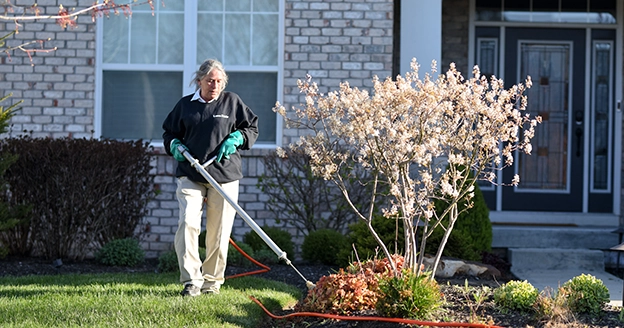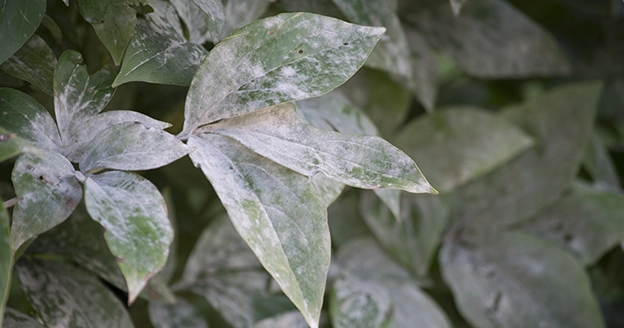We know Indiana and we tailor our applications accordingly. After a review of your landscape, we deliver the best applications to protect your trees and shrubs against insects, and disease and provide them with the nutrients they need. Please note that your application schedule is subject to change. Our experience and expertise with Indiana seasons, weather, and conditions enable us to determine the best timing for each application.
Please note that your application schedule is subject to change. Our experience and expertise with Indiana seasons, weather, and conditions enable us to determine the best timing for each application.
Tree & Shrub Tips
Whenever rainfall is lacking for extended periods, supplemental water is needed to keep plants healthy, especially on newly planted or less-established trees. Follow the “5 + 5 rule,” which says to provide 5 gallons of water plus another 5 gallons for every diameter-inch of the tree trunk. Mature or well-established trees need about 1 inch of water weekly to keep soil moisture. You should continue to water your trees and shrubs through the fall until the ground is frozen so that trees have enough moisture to survive the winter months and are ready for spring growth. Sometimes it may be necessary to water in the winter if rain or snowfall is limited. If this is needed, winter watering is best done on warm days when temperatures are above 40 degrees.

Pruning trees to remove dying, diseased, or dead branches, or to improve branching structure is best done in late fall and early winter. This also is a good time to remove unwanted sprouts. Though, you should limit the amount of green wood pruning that you do before going into winter to reduce the number of energy reserves the plant must use to heal its pruning wounds. When pruning large tree limbs, first make an undercut by beginning on the bottom of the branch anywhere from 6 to 12 inches away from the branch union cutting less than halfway through the limb. The second “top cut”, is made above or just outside of the undercut; proceed with the saw from the top of the branch moving downward. This is the pruning cut that allows the branch to be cut away completely and lets the branch be removed easily as gravity takes over so the branch can fall naturally, preventing the bark from ripping. Finally, you can make the final cut just outside the branch bark ridge and the outer portion of the branch collar on the bottom side of the attachment. When the proper cuts are made, you will have minimal wounding creating a faster recovery.
Knowledgeable Staff
Our experienced and knowledgeable staff can answer any of your tree and shrub questions and provide you with helpful tips; so that together we can keep your trees and shrubs healthy and beautiful.
What Does Our Tree & Shrub Care Program Include?
-
Dormant Oil ApplicationA Dormant Oil Application kills insects like aphid and spider mites by suffocating them. This is done by applying a thin film of oil that plugs the pores through which they breathe. On certain types of trees and shrubs, dormant oil can also help prevent scale. Dormant oils should be applied in spring before the plants show signs of breaking dormancy or late fall after the leaves have fallen.
-
Fertilizer
Lawn Pride’s tree and shrub fertilizer application is injected 6 inches into the drip line of trees and shrubs. The dripline is how far the branches come out from the plant. Proper fertilization is important in all plants. Plants that are properly fertilized have hardier growth and better resistance to disease and insects. Fertilizing trees and shrubs properly can help overcome weak growth issues and will help to recover from environmental stresses like insect feeding, diseases, and storm damage. Proper nutritional care can accelerate the growth of a young plant, help stimulate the growth in a slow-growing species, as well as help, maintain good color and health in older plants.
-
Insect & Disease Control
Insects can devastate your landscaping. Our insect and disease control application is applied to all non-flowering landscape up to 25 feet tall. This application protects from insect damage and some diseases such as Japanese Beetles and Powdery Mildew. Insects die by consuming our product that has been applied to the leaves and bark of the plant. Lawn Pride offers this application 3 times a season for consistent protection and control.
Our Special Offers
We understand your goal to keep your lawn looking its best. We take pride in your lawn because we know you do, too. Check out our special offers to see how you can save on your next lawn care application.
Services We Provide
Customer Reviews
View All Reviews
The Neighborly Done Right Promise® delivered by LawnPride®, a proud Neighborly company.
Lawn Pride of Indianapolis
Our specialists deliver the level of lawn care you need and deserve. We're preferred providers of Indianapolis lawn care, distinguished by our commitment to ensuring our customers understand our processes and are thrilled with the results. You can count on Lawn Pride to provide exceptional customer care as we develop a lawn that makes you proud. Lawn Pride of Indianapolis provides lawn care services for the following cities:

Join Our Team
“We have the power to make things better.” That’s our mantra, not only for our customers' lawn issues, but also you, a future team member! At LawnPride, we provide a career path for growth and treat you like family. They know that a happy, motivated team is key to serving customers well. That's why we value integrity and respect and create a strong work ethic.



